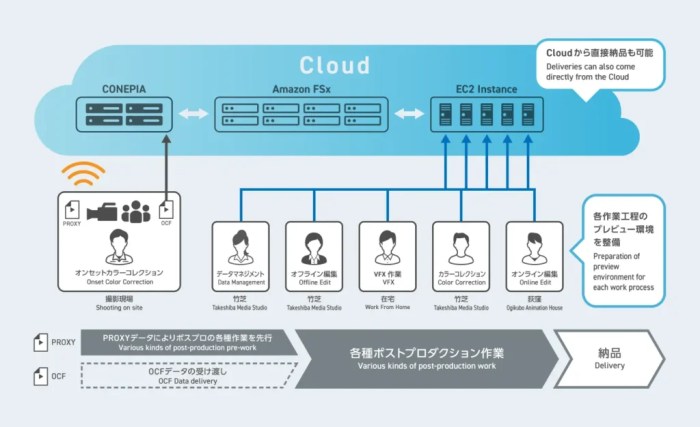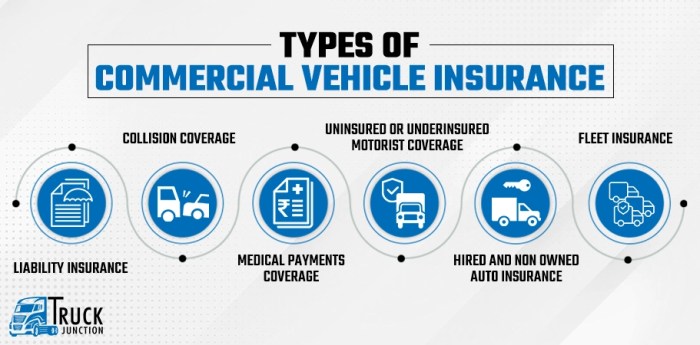Exploring the seamless integration of Business Workflow Systems with Cloud Solutions opens up a world of possibilities for companies looking to optimize their operations. This article dives deep into the intricacies of merging these systems, shedding light on the benefits and challenges that come with this technological synergy.
As we navigate through the key aspects of this integration, a clearer picture emerges of how businesses can leverage the power of cloud solutions to streamline their workflow processes effectively.
Overview of Business Workflow Systems and Cloud Solutions
Business workflow systems are tools and software designed to streamline and automate the flow of tasks, documents, and information within an organization. These systems help improve efficiency, collaboration, and decision-making processes by defining a set of rules and sequences for how work should be done.
Cloud solutions, on the other hand, refer to technology services and resources delivered over the internet. These solutions enable businesses to store, manage, and access data and applications remotely, without the need for on-premises infrastructure. Cloud solutions offer scalability, flexibility, and cost-effectiveness for modern business operations.
Differences Between Traditional Workflow Systems and Cloud-Based Solutions
- Traditional Workflow Systems:
- Usually require on-premises hardware and software installations.
- May have limited scalability and flexibility.
- Operate within the organization's internal network.
- Often involve higher maintenance costs and IT support.
- Cloud-Based Solutions:
- Are accessed via the internet, eliminating the need for on-site infrastructure.
- Offer greater scalability and flexibility to adapt to changing business needs.
- Enable remote access and collaboration from anywhere with an internet connection.
- Can reduce IT maintenance costs and provide automatic updates and backups.
Benefits of Integrating Business Workflow Systems with Cloud Solutions
Integrating business workflow systems with cloud solutions offers numerous advantages for organizations looking to enhance their operational efficiency and productivity.
Improved Accessibility and Flexibility
By utilizing cloud solutions to integrate workflow systems, employees can access important business processes and data from anywhere, at any time. This flexibility allows for increased collaboration and productivity, especially in a remote work environment.
Cost Savings and Scalability
Cloud solutions offer a cost-effective way to scale business operations without the need for significant investments in hardware or infrastructure. Companies can easily adjust their resources based on demand, reducing unnecessary expenses and optimizing efficiency.
Enhanced Security and Data Backup
Integrating workflow systems with cloud solutions provides an added layer of security for sensitive business data. Cloud providers often implement robust security measures and regular backups, ensuring that critical information is protected and easily recoverable in case of any disruptions or data loss.
Streamlined Processes and Improved Collaboration
Cloud-based workflow systems enable real-time collaboration and communication among team members, leading to streamlined processes and faster decision-making. By centralizing workflows and data in the cloud, organizations can eliminate bottlenecks and optimize their operations for better efficiency.
Successful Examples
Companies like Salesforce, Microsoft, and Adobe have successfully integrated their business workflow systems with cloud solutions to enhance performance and productivity. These companies have demonstrated the benefits of seamless integration, leading to improved customer experiences and increased operational efficiency.
Challenges Faced in Integrating Business Workflow Systems with Cloud Solutions

Integrating business workflow systems with cloud solutions can present several challenges that organizations need to address in order to ensure a successful implementation.
Security Concerns and Data Privacy Issues
One of the major challenges in integrating business workflow systems with cloud solutions is the potential security risks and data privacy concerns that may arise. When sensitive business data is moved to the cloud, there is always a risk of data breaches, unauthorized access, and compliance issues.
- Implement strong encryption methods: Utilize encryption protocols to protect data both in transit and at rest in the cloud.
- Regular security audits: Conduct regular security audits and assessments to identify and address vulnerabilities proactively.
- Strict access controls: Implement strict access controls and user authentication mechanisms to ensure only authorized personnel can access sensitive data.
- Compliance with regulations: Ensure compliance with data protection regulations and industry standards to avoid legal repercussions.
Integration Complexity and Compatibility Issues
Another challenge faced in integrating business workflow systems with cloud solutions is the complexity of integration and compatibility issues between different systems and platforms.
- Standardize data formats: Ensure data formats are standardized across systems to facilitate seamless integration.
- API compatibility: Verify that the APIs of the workflow systems and cloud solutions are compatible for smooth data exchange.
- Testing and validation: Conduct thorough testing and validation of the integrated systems to identify and resolve any compatibility issues early on.
Performance and Scalability Constraints
Performance and scalability constraints can also pose challenges when integrating business workflow systems with cloud solutions, especially when dealing with large volumes of data and complex workflows.
- Optimize workflows: Streamline workflows and optimize processes to improve performance and efficiency.
- Scalability planning: Develop a scalable architecture that can accommodate the growth of data and users without compromising performance.
- Monitoring and optimization: Implement monitoring tools to track performance metrics and optimize system resources as needed.
Best Practices for Seamless Integration
When integrating business workflow systems with cloud solutions, it is crucial to follow best practices to ensure a smooth transition and maximize the benefits of the integration.
Selecting the Right Cloud Provider and Workflow System
Choosing the right cloud provider and workflow system is essential for successful integration. Here are some tips to help you make the best decision:
- Assess your business needs and objectives to determine the features and capabilities required from the cloud provider and workflow system.
- Research and compare different cloud providers to find one that aligns with your business requirements, budget, and security standards.
- Consider scalability and flexibility when selecting a cloud provider to ensure that it can accommodate your business growth.
- Look for workflow systems that offer seamless integration with your chosen cloud provider to streamline processes and enhance efficiency.
Importance of Training Employees
Training employees to adapt to the new integrated system is paramount for successful implementation. Here's why it's crucial:
- Provide comprehensive training sessions to familiarize employees with the new workflow system and cloud solutions.
- Offer ongoing support and resources to help employees troubleshoot any issues and optimize their use of the integrated system.
- Encourage employees to embrace the change and highlight the benefits of the new system to motivate them to learn and adapt quickly.
- Monitor employee progress and provide feedback to address any gaps in understanding or performance effectively.
Wrap-Up
In conclusion, Integrating Business Workflow Systems with Cloud Solutions presents a promising avenue for businesses to enhance their productivity and adaptability in the ever-evolving digital landscape. By embracing best practices and overcoming challenges, companies can unlock new levels of efficiency and performance.
Q&A
What are the main advantages of integrating Business Workflow Systems with Cloud Solutions?
The main advantages include increased flexibility, improved collaboration, scalability, and cost savings.
How can companies address security concerns when integrating these systems?
Companies can address security concerns by implementing robust encryption protocols, access controls, and regular security audits.
What are some common obstacles faced during the integration process?
Common obstacles include data migration issues, compatibility issues between systems, and resistance to change from employees.









